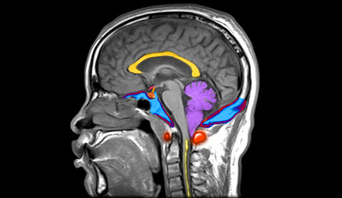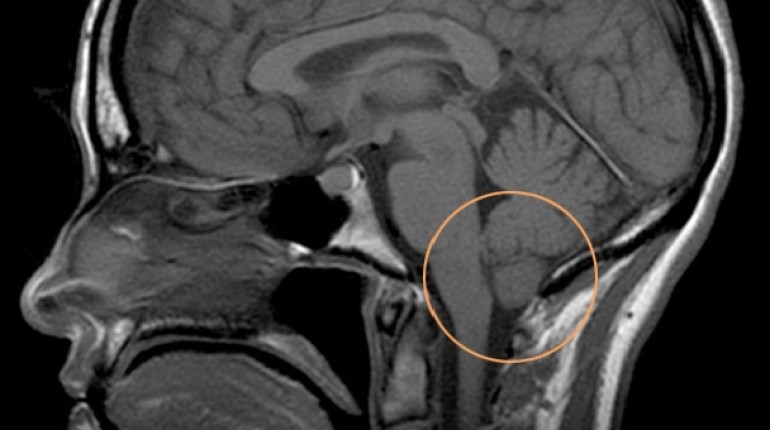A Chiari malformation is a congenital defect in the area of the back of the head where the brain and spinal cord connect, wherein the lower parts of your brain have been pushed downwards towards the spinal cord.
By the time the parts of the brain are pushed out of the skull towards the spinal cord, this can cause pressure at the base of the brain and might block the flow of cerebrospinal fluid (CSF) – a clear fluid that surrounds and protects the brain and spine, and also carries nutrients to the brain and removes waste- to and from the brain.
Chiari malformation can sometimes run in families, and it’s possible that some children born with this disorder may have inherited a faulty gene that caused problems with their skull development in the womb. But the faulty gene is still yet to be discovered.![]()
![]()
![]()
![]()

But, try not to worry – the risk of passing a Chiari malformation on to your child is very small. Even if children do inherit it, most will not develop the agonizing symptoms.
There are two types of Chiari Malformation:
- headaches, usually at the back of the head – these are brought on, or made worse by, exercise, straining, laughing or bending over
- neck pain
- dizziness and balance problems
- numbness or tingling in the arms or legs
- blurred vision and involuntary movement of the eyes (nystagmus)
- swallowing problems (dysphagia)
- hearing loss and tinnitus
How is it treated? 




The symptoms caused by a type 1 Chiari malformation can usually be managed with medication. For example, painkillers can help relieve any headaches and neck pain.
You may need decompression surgery to reduce the pressure at the base of your brain, wherein the surgeon will make an incision at the back of your head and remove a small piece of bone from the base of your skull. This will widen the space in the foramen magnum (opening to the skull).
They may also remove a small piece of bone from the top of your spine, to relieve the pressure on your brain and allow CSF to flow normally. This procedure is known as a spinal laminectomy.
Image Credits: conquerchiari, mayfieldclinic, chiariandnucca, hopkinsmedicine
